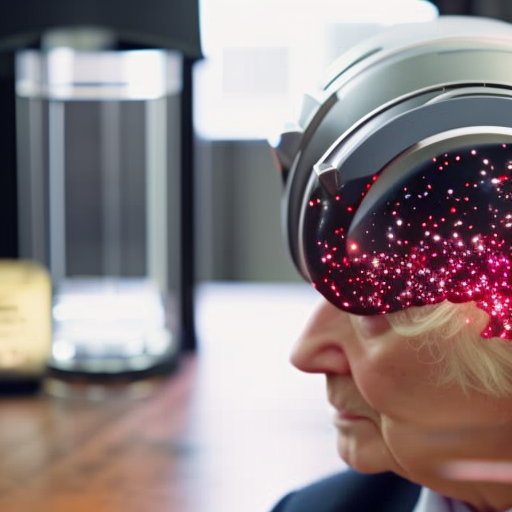
Air Pollution and its Link to Neurodegenerative Diseases
Air pollution in urban environments has long been associated with poor health. Breast cancer, immune dysfunction, osteoporosis, heart problems, and dementia have all been linked to air pollution. However, understanding exactly how poor air quality is explicitly causing disease has been a challenge for researchers.
Epidemiological Links with Alzheimer’s Disease
Epidemiological links between Alzheimer’s and air pollution have long been detected. People living in particularly polluted urban areas tend to report slightly higher rates of neurodegenerative disease.
The Role of Magnetite in Air Pollution
Cindy Gunawan, lead researcher on a new study looking at the mechanisms behind air pollution’s link with neurodegeneration, says most cases of late-stage Alzheimer’s disease are strongly influenced by environmental or lifestyle factors. Gunawan is particularly interested in one element found in air pollution – magnetite.

“Previous studies have indicated that people who live in areas with high levels of air pollution are at greater risk of developing Alzheimer’s disease,” Gunawan said. “Magnetite, a magnetic iron oxide compound, has also been found in greater amounts in the brains of people with Alzheimer’s disease. However, this is the first study to look at whether the presence of magnetite particles in the brain can indeed lead to signs of Alzheimer’s.”
For several decades, it has been known that magnetite particles can emerge naturally in a human brain. It was thought these tiny magnetic particles were a natural byproduct of the way a brain processes iron.
But in 2016, a landmark study presented a stark new hypothesis. That research closely examined brain tissue samples from 37 deceased individuals. It found plenty of magnetite particles in frontal cortex tissue, and the majority seemed to be derived from pollution. According to the 2016 study, endogenously-formed magnetite takes a completely different shape to particles that come from air pollution – and these air pollution particles outnumber naturally derived particles in most human brains by 100 to one.
The Role of Magnetite in Alzheimer’s Risk
A working hypothesis emerged to suggest it could be magnetite in air pollution that is particularly increasing a person’s risk for Alzheimer’s.
“Magnetite is a quite common air pollutant,” explained Kristine McGrath, a co-author on the new study from the University of Technology Sydney. “It comes from high-temperature combustion processes like vehicle exhaust, wood fires and coal-fired power stations as well as from brake pad friction and engine wear. When we inhale air pollutant, these particles of magnetite can enter the brain via the lining of the nasal passage, and from the olfactory bulb, a small structure on the bottom of the brain responsible for processing smells, bypassing the blood-brain barrier.”
The Effects of Magnetite Air Pollution
Using mice engineered to be susceptible to Alzheimer’s disease, the researchers looked at the effects of sustained exposure to magnetite air pollution, as well as iron and diesel pollution. While none of the pollution exposures led to good outcomes in the animals, the researchers found that magnetite specifically “increased anxiety and stress, neuronal cell loss, as well as inflammation and oxidative stress” – all key pathological signs of Alzheimer’s disease.
Ultimately, these findings provide further evidence that air pollution is likely harmful to our brain. The researchers suggest that magnetite levels should be incorporated into new air quality safety standards. However, it is important to note that poor urban air is a single, harmful entity. While magnetite may cause the most damage in terms of neurodegenerative disease, all these problematic pollutants come from the same sources – vehicle emissions and emissions from coal-fired power stations.
The new research was published in Environment International.
Source: University of Technology Sydney
SDGs, Targets, and Indicators
1. Which SDGs are addressed or connected to the issues highlighted in the article?
- SDG 3: Good Health and Well-being
- SDG 11: Sustainable Cities and Communities
- SDG 13: Climate Action
2. What specific targets under those SDGs can be identified based on the article’s content?
- SDG 3.9: By 2030, substantially reduce the number of deaths and illnesses from hazardous chemicals and air, water, and soil pollution and contamination.
- SDG 11.6: By 2030, reduce the adverse per capita environmental impact of cities, including by paying special attention to air quality and municipal and other waste management.
- SDG 13.2: Integrate climate change measures into national policies, strategies, and planning.
3. Are there any indicators mentioned or implied in the article that can be used to measure progress towards the identified targets?
- Air pollution levels
- Rates of neurodegenerative diseases (such as Alzheimer’s)
- Presence of magnetite particles in the brain
Table: SDGs, Targets, and Indicators
| SDGs | Targets | Indicators |
|---|---|---|
| SDG 3: Good Health and Well-being | SDG 3.9: By 2030, substantially reduce the number of deaths and illnesses from hazardous chemicals and air, water, and soil pollution and contamination. | – Air pollution levels – Rates of neurodegenerative diseases (such as Alzheimer’s) |
| SDG 11: Sustainable Cities and Communities | SDG 11.6: By 2030, reduce the adverse per capita environmental impact of cities, including by paying special attention to air quality and municipal and other waste management. | – Air pollution levels |
| SDG 13: Climate Action | SDG 13.2: Integrate climate change measures into national policies, strategies, and planning. | – Air pollution levels |
Behold! This splendid article springs forth from the wellspring of knowledge, shaped by a wondrous proprietary AI technology that delved into a vast ocean of data, illuminating the path towards the Sustainable Development Goals. Remember that all rights are reserved by SDG Investors LLC, empowering us to champion progress together.
Source: newatlas.com

Join us, as fellow seekers of change, on a transformative journey at https://sdgtalks.ai/welcome, where you can become a member and actively contribute to shaping a brighter future.






